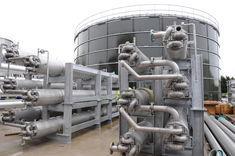
Anaerobic digestion involves breaking down organic matter such as food waste, energy crops, sewage, silage and animal waste to produce biogas, which can go into the gas grid, produce electricity and heat or be converted to an engine fuel, while the liquid fraction can also be used as a fertiliser and soil conditioner. However, we will have to wait to see how this policy support is implemented in the forthcoming Energy Bill.
Our experience of such projects reveals several challenges that need to be overcome before they can get off the ground. Funding can be an issue as highlighted by the former government’s proposal to provide “grandfather” support for anaerobic digestion projects which, if adopted by this government, will enable these projects to receive a set level of financial support. The level of financial backing in the Renewables Obligation Certificate banding scheme is lower than other types of renewable technologies. If this sector is to grow, perhaps the government will have another look at the banding structure.
Funders, investors and their lawyers carry out due diligence to identify financial and legal risks as part of their determination process. They want to review a paper trail - for example, has planning permission been granted?
Objections to planning applications need to be carefully handled, although on-site developments at a farm or food-manufacturing facility tend to be less contentious as traffic generation is not an issue, unlike other schemes where the biomass fuel is delivered to a generating site.
Has the grid connection been properly costed and heads of terms agreed? Have any related property issues been identified and addressed? Have the permitting and other regulatory issues been dealt with? Are contracts in place dealing with ongoing maintenance and operation issues? Technological risk is still an issue, although as projects get up and running this will reduce, but they all need to be supported by appropriate warranties and performance guarantees from plant designers and providers.
This paper trail can be the defining factor, so it is important that developers understand the economic and legal risks involved and get assistance. On top of this, developers have to produce credible and realistic income stream projections. A wide range of potential funding options may be negotiated, for example receiving staged payments upon reaching certain project milestones or perhaps obtaining funding from a venture capital trust (a tax-efficient investment vehicle).
The funding documentation needs to be carefully reviewed and negotiated. As more of these projects get off the ground, the costs involved in setting them up will decrease as project documentation becomes standardised and experienced professional advisers familiar with the issues are appointed.
The rising cost of landfill tax and government subsidies makes anaerobic digestion for the food sector a win-win situation as it can help a business reduce its carbon footprint and generate income at the same time.